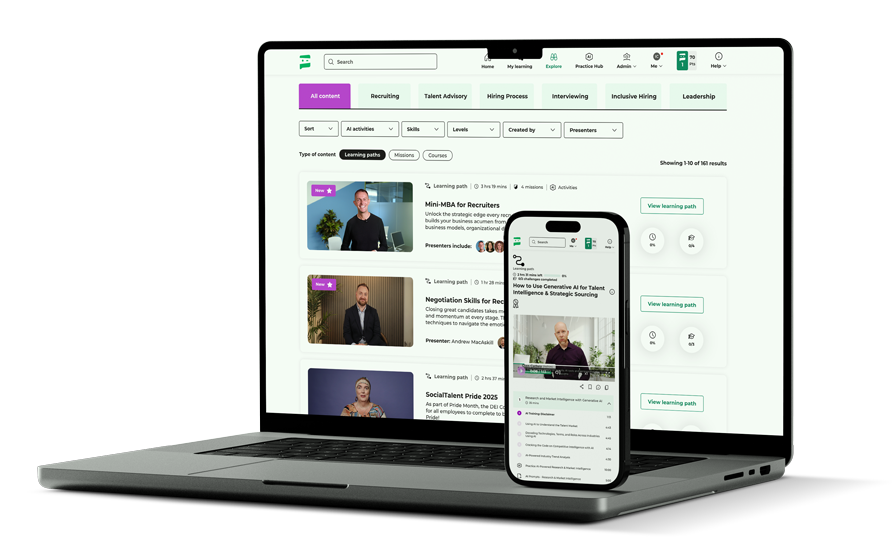By Stephen Clarke
Recruiting and talent acquisition are pivotal functions in any organization’s success. However, many companies grapple with ineffective recruitment strategies that result in high turnover rates, increased costs, and missed opportunities. In this comprehensive article, we will delve deep into the ten most common reasons why your recruitment strategy might be failing and provide actionable solutions, backed by research and practical examples, to address these issues.
Many companies grapple with ineffective recruitment strategies that result in high turnover rates, increased costs, and missed opportunities. In this comprehensive article, we will delve deep into the ten most common reasons why your recruitment strategy might be failing and provide actionable solutions, backed by research and practical examples, to address these issues.

1. Not Setting Measurable Objectives
One of the fundamental mistakes in recruitment is the failure to set clear and measurable objectives. Without defined goals and Key Performance Indicators (KPIs), it’s challenging to evaluate your recruitment efforts effectively. To improve, establish specific objectives, such as reducing time-to-fill positions by 20% in the next quarter or increasing the quality of hires by 15% within the year. Regularly measure your progress and adapt your strategy based on the data.
2. Not Defining Your Target Audience
Recruiters often cast a wide net, hoping to catch the best candidates. However, this approach can lead to inefficiencies and mismatches. To succeed, identify your ideal candidate profile, focusing on skills, experience, and cultural fit. For instance, if you’re hiring software developers, specify the programming languages and experience levels required. According to Harver, TA professionals can spend up to 13 hours in a single week sourcing a candidate for a role, so it pays to understand exactly who you’re looking for!
3. Under-Leveraging Employer Brand
Your company’s reputation plays a pivotal role in attracting top talent. Neglecting employer branding can hinder your recruitment efforts significantly. In a survey by Glassdoor, 84% of job seekers said they would consider leaving their current job for one with an excellent reputation. To build a strong employer brand, consider creating employee testimonials that showcase the positive aspects of working at your company. Share stories of career growth within your organization and emphasize your workplace culture, values, and mission.
4. The Hiring Manager Relationship
Recruiters and hiring managers must collaborate effectively. Poor communication and misalignment can lead to delays and misjudgments. In fact, according to research by LinkedIn only about 31% of hiring managers completely agree that they communicate enough with recruiters. To strengthen this relationship, hold regular meetings with hiring managers to discuss job requirements and expectations. Ensure clear and detailed job descriptions and maintain open channels of communication throughout the recruitment process.
5. Your Interview Process
A lengthy and disorganized interview process can deter top talent. In fact, 43% of candidates lose interest in a job if the hiring process takes too long (Glassdoor). Streamline your interview process by mapping out the steps and responsibilities. Consider automating repetitive tasks like interview scheduling in your ATS. Additionally, provide timely feedback to candidates after each interview round to keep them engaged and interested. We recently spoke with Wendy Mayer, VP of Candidate Experience at Pfizer, and for her, it’s all about setting expectations:
6. Using Social Media Like a Jobs Board
While social media can be a valuable recruitment tool, using it solely as a job posting platform is ineffective. A survey by Jobvite revealed that 59% of job seekers use social media to research companies’ culture and values. Utilize social media platforms to showcase your company’s culture through photos, videos, and employee spotlights. Engage with potential candidates by responding to comments and messages, and share valuable content related to industry trends and career development to build relationships.
7. Failure to Identify Selling Points
Your recruitment strategy should highlight the unique selling points of your organization. Identify what sets your company apart, whether it’s your mission, benefits, or work environment, and incorporate these selling points into your recruitment messaging. For example, if your company offers flexible work arrangements or professional development opportunities, make sure these are clearly communicated in job listings and during interviews.

8. Letting Bias Impact Decision Making
Bias can significantly impact your recruitment process, leading to missed opportunities and diversity challenges. Implement diversity and inclusion training for both recruiters and hiring managers to raise awareness and develop strategies for mitigating bias in the hiring process. Adopt structured interview techniques, such as using a standardized set of questions for all candidates, and employ diverse interview panels to ensure fair and unbiased hiring decisions.
Learn more: 9 Types of Bias and the Ways They Affect Your Recruiting Efforts
9. Not Nurturing Candidates Effectively
Candidate engagement shouldn’t stop after the interview. Neglecting to nurture candidates can result in lost talent. According to a Career Arc report, 72% of candidates who have a negative experience will share it online or with others. Maintain communication with candidates, provide regular updates on their application status, and ensure a positive experience throughout the hiring journey. Consider implementing automated email campaigns to keep candidates informed and engaged, even if they aren’t selected for a particular position.
10. Ineffective Onboarding
Your recruitment strategy should extend beyond the hire date. An ineffective onboarding process can lead to early attrition and reduced employee satisfaction. Research by BambooHR found that organizations with a structured onboarding process improve new hire retention by 82%. Invest in comprehensive onboarding programs that integrate employees smoothly into your organization’s culture and workflows. Provide clear training plans, assign mentors or buddies, and gather feedback from new hires to continually improve the onboarding experience.
Learn more: How to Create an Onboarding Experience that Really Works
Conclusion
A successful recruitment strategy is essential for attracting top talent and driving organizational growth. By addressing these ten common reasons for recruitment failure you can build a more effective and efficient recruitment process. Remember that continuous improvement and adaptation are key to staying competitive in the ever-evolving world of talent acquisition.


